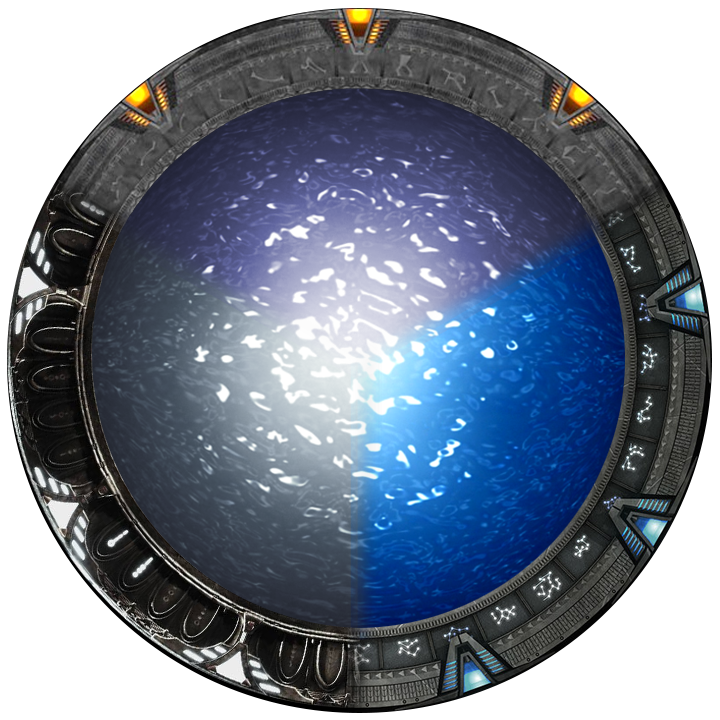Honestly back when I was a kid this is how I thought games were made, every possible image of a game was already saved and according to your input it just loaded the next image.
I stopped thinking that with 3d games
I thought that they were managing that stuff on a per-pixel basis, no engine, assets, or other abstractions, just raw-dogging pixel colors.
And before I even played video games at all I was watching somebody play some assassin’s creed game I think and I thought the player had to control every single limb qwop-style.
Apparently ai is learning to do that first thing you said about pure pixel management. It’s crazy that it works at all
Even with 2D games that’s basically impossible. Only time it could work is with turn based games and then…you end up with this post lol.
I see you’ve never played “Dragon’s Lair”, where every scene was cell animated and the player “chose” the path that the animation would take.
That one ran on a laserdisc, right? Like a CAV disc so it could very quickly move the laser to one of a couple of places for basically a win/lose decision, overlaying some graphics over top for the game UI?
Space Ace!
LOL, I’ve actually heard of it, but I have not played it. Ofc that game never even crossed my mind when writing my comment haha. I suppose choose your own adventure style books also fall into this category.
I remember having a thought one day as a young kid while interacting with a DVD main menu (the kind that had clips from the movie playing in the background, and would play a specific clip depending on what menu you went in to).
“This is basically how video games work, there’s a bunch of options you can choose from and depending on what you do it shows you something. Videogames are just DVD menus with way more options.”
I grew up to not be a programmer.
The game Myst actually worked kind of like a DVD menu with more options.
Its not terribly far off from pre rendered or FMV games like Myst are doing it.
It does work like that a little bit, like with sprites they’ve often hard-coded the frames of animation, so when you push a button it loads the correct image, like Mario’s jumping frame with his hand in the air. But there are such things as tilesets, and sprite positions, and all that good stuff.
Those shitty old tiger hand holds kind of worked like that.
This is what I believed. And I tried to trick the game by doing movements and inputs no one could have planed. Never outdid that planning somehow. They were on to me!
I grew up mostly with the PS2 and above and I thought the same thing 😅. I did think there had to be a better way though
I remember speculating as a (small) kid that the AI soldiers in Battlefront II’s local multiplayer might be real people employed by the developer. Not the brightest child was I.
I remember as a kid seeing my older brother talk to people on a mic and thought he was talking to the characters in the game
Dragon’s Lair was a hugely popular arcade game that worked that way.
At university I had an introductory C course where one assignment was to write a program that searched a 4x4 array of booleans for groups of cells set to true. Groups had to be rectangles, powers of 2 in width and height, and could wrap (i.e. they could go off the right edge and back on the left edge). We had to submit our programs by e-mail and printed form one week later. The prof. marked the paper versions and the TA ran and tested the digital. One slight problem, if you used the university owned printers, they charged for print outs. A few pence per page to cover costs and stop people abusing the rather nice high quality printers the computer faculty had.
I’d always enjoyed programming and whilst C was new to me, using another language wasn’t a big problem. As I worked on it I realised the problem wasn’t as straightforward as I first thought, but I spent a few hours on it that evening and had a solution I was happy with.
Penny was a student on the course whose approach to academia was memorization. She didn’t consume, process, and apply concepts. She just remembered them. Her favourite subject was maths. While the rest of us were struggling to derive some formula, she’d have just committed the process to memory.
Penny was complaining a lot on this programming assignment. She didn’t understand why the assignment was so hard for an introductory class. I didn’t judge. I know some people find programming hard, but I didn’t feel I could help her much without jeopardising my own mark. There’s only so much uniqueness in a small program and if she just copied my solution we’d both get penalised for plagiarism. I did mention to her the cases I’d found tricky to get right was when two groups overlapped. If one group completely covered a smaller one you’d only report the bigger one, but if not you’d report both groups.
I heard, through her boyfriend, that that week had involved many long evenings working on this assignment, but she turned up at the next class solution in hand. Obviously stressed, she carried a pile of paper of several hundred pages. She had written a program that consisted of an if-statement for every possible group size and location. About a hundred different possible groups. Each condition written with constant value indices into the array. To cope with the overlapping groups problem, checks for smaller groups also checked that no larger group also covered this area. No loops. No search algorithm. Just a linear program of if-statements.
Apparently debugging this has been a nightmare. Cut and paste errors everywhere, but when I’d told her about overlapping groups aspect it had blown her mind. There always seemed to be a combination she hadn’t accounted for. Multiple times she thought she was done, only to find a corner case she’d missed. And just to kick her when she was down, she’d paid for multiple printouts, each one costing about £10 only to find a problem afterwards.
This consistent A grade student who sailed through everything by relying on her memory had been broken by being asked to create an algorithm rather than remember one. She got credit for submitting a solution that compiled and solved some cases, but I doubt the professor got past the first page of that huge printout.
Penny had worked really hard for that D.
Lol why does this entire text sound like a setup for that last sentence
😂😂😂
I need this in green text format
deleted by creator
do you think it’s possible to just let a women exist without immediately sexualizing them
Fair, I regret my comment - was a dumb joke in response to the last line of this wall of text (which I’m guessing was a joke)
Professor was an idiot if it gave a D for a working solution. Getting it working is the grade, optimizing is the next step.
Don’t teach lol
Name checks out
Gottem! Meanwhile, I’m right and you’re a moron.
The downvotes says you’re retarded, give it up dickhead 😂
So if your moral and intellectual superior was being upvoted, you’d concede me being right? You’re even dumber than I first assessed. Run along worthless dumbfuck, leave your superior alone.
This reminds me of one of my very first programs, a tic-tac-toe game I wrote in high school. It displayed hardcoded grids of Xs and Os and blanks very similar to what’s shown here. This approach worked because of the much more limited move possibilities. The program could always win if it made the first move, and always win or tie if the human moved first, depending on if the human made mistakes. I wish I still had the code.
Did the program cheat? Tic tac toe is a tie if opponents play correctly.
How do you define cheating in such a simple game?
Placing moves in invalid locations, passing a turn, or making multiple moves on one turn?
There are no invalid locations in tic Tac toe, passing a turn provides no advantage, I suppose you could take extra turns to cheat.
An invalid turn would be something like placing a move on top of an already-filled square or outside of the 9 grid spaces. It seems obvious to a human that you can’t do these things, but computer bugs have a tendency to do things you don’t expect. And yes, passing a turn doesn’t provide an advantage, but I listed it because it’s still technically cheating.
I’m probably remembering it wrong, it was a long time ago. It definitely always either won or tied but could never lose, because it knew the right responses to every move. No, it didn’t cheat lol.
deleted by creator
This is actually what made me start my programming journey. Made small games using PowerPoint until I was starting to make an level editor on a 12x12 grid. My father thankfully stopped me pretty early on and showed me Game Maker 7. Not sure for how long i would have continued.
Are you me lol? I did exactly the same, and at some point I started computing how many slides I had to make to make anything larger and I pivoted. My dad didn’t know this stuff but I also ended up at gamemaker
PowerPoint is actually turning complete so… https://youtu.be/uNjxe8ShM-8
hey, there is an inherent fun in maing games/programs using things that were never meant to.
once i did a CPU/RAM emulator using excel, so you could see every bit.
it was fun to make loops, and programs
This is how I got into game development myself. I used to use Javascript to make dumb little interactive games in the early 2000s before it was ever meant to do such things, emulating what is now modern day HTML5 canvas and such
bes way to learn is by doing what you’re not supposed to
True enough! Mistakes are the best teacher. That said, I’m still making games in Javascript to this day, so I guess you can say I haven’t learned enough lol.
Considering that enough pro’s are doing the same, perhaps you didn’t really do it wrong?
I coded basic games in PowerPoint using animations plus VBA. Not good.
I suddenly feel in good company. I got my start doing crazy things with PowerPoint and Excel because it was what I knew.
AI has probably finished this game by now.
And still lost.
This is supposed to be a joke but sadly a lot of beginner tutorials on coding Tic-Tac-Toe teach this
As a middle schooler I used Power Point to make FMV games for my friends and classmates, and it was basically this. Just, like, SO MANY slides
This is where you’d normally go “there must be a better way…”
Not some people.
This is a great advertisment for what real developers do. You shouldn’t just crank out the first idea that works. You should be doing something that is smarter and sensible.
Laughable for chess, but essentially how Steve Mould played tic tac toe using synthesized DNA.
Found the guy who passed the test with
printf (" *\n **\n ***\n ****\n*****\n);Well this is how programing works so if you don’t like it…
They are doing it dumb. You can text output chess but you just need to keep track of where the pieces are in code, then when you are ready to output, place the characters. Saves so much time. /s
I’m familiar with issues like this. Lots of copy/pasting with little edits here and there all the way down.
not to get epistemological,
but I hate that technically there’s only a limited number of moves in chess, and therefore the best move is there, maybe there’s a strategic where white will always win, but we’ll never know because the number of variations likely is larger than atoms in the universe.
On the lower end of estimates, the number of unique chess board configurations is 10^120, often referred to as the Shannon number. The universe doesn’t stand a chance.
That’s cool. I think this is why I never liked chess.
maybe a distant future technology could compute that, Clarktech style
In modern chess, engines have gotten good enough that we generally do know the top moves and humans can’t beat them. We can even numerically assess someone’s chess play with a computer, which we call “accuracy”. Obviously they can always be improved further, and there are a handful of situations where they might misevaluate, but it’s still pretty incredible.
Engines have only made chess more exciting as they have shattered a lot of old theory and helped people find a lot of new and innovative ideas. They are an incredible aid in analysis and tournament prep.
yhea, but engines still act as if it is an unsolved game.
while in theory, given that the number of moves is limited, in theory one colour would always win.
The solution to chess is almost certainly a draw, since this is what all top engine chess converges to. Otherwise you are completely correct: chess is unsolved and will likely never be solved.
one AI that always manages to draw in chess is Stable diffusion and dalle…
/j
if that is python then makes sense














